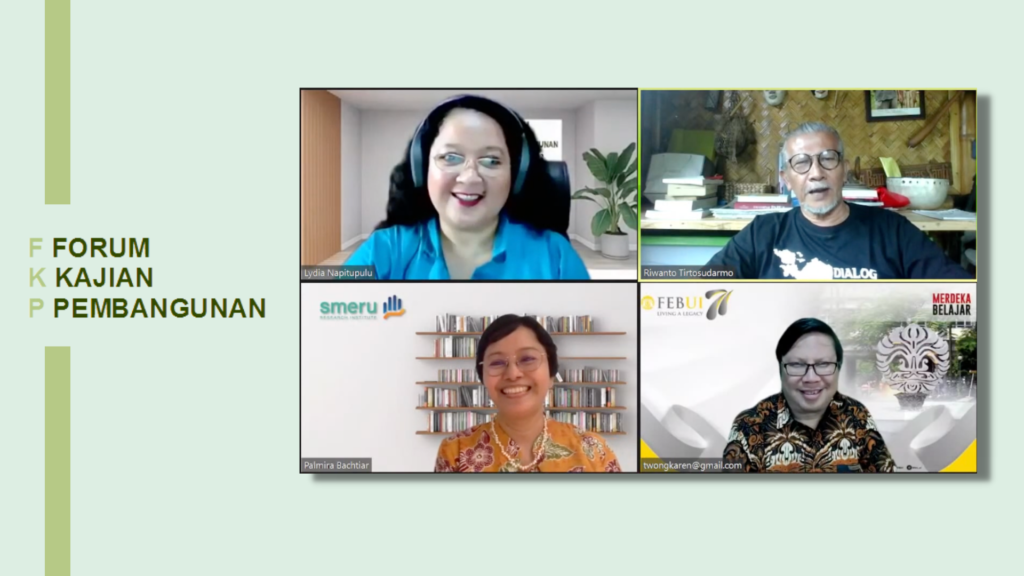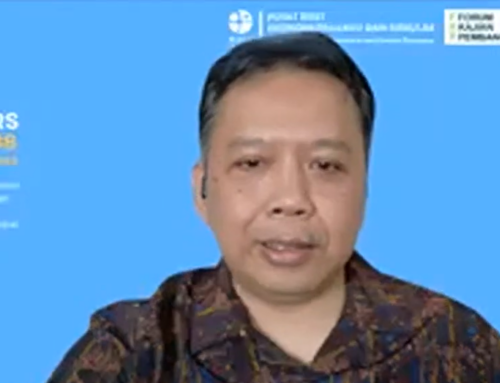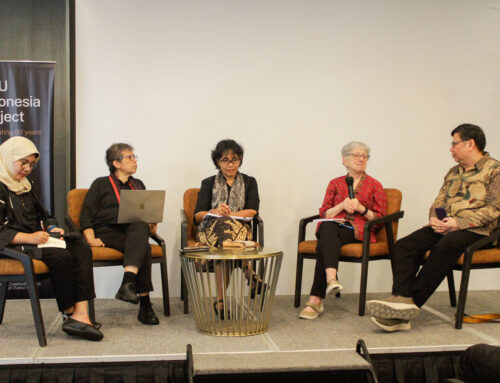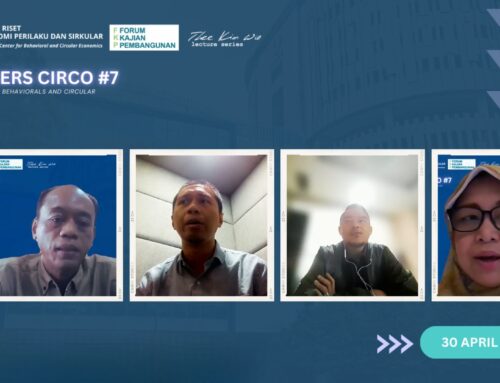FKP hosted by ANU Indonesia Project with Riwanto Tirtosudarmo (Independent Social Researcher; former researcher at LIPI between 1980-2017), Palmira Bachtiar (The SMERU Research Institute) and Turro Wongkaren (Demographic Institute, Universitas Indonesia). Kamis, 14 April 2022
KEY POINTS:
- Riwanto Tirtosudarmo discussed his book entitled “From colonization to nation-state: the political demography of Indonesia”. There are four parts of this book, each discussing different topics related to the political demography of Indonesia. The first part of the book talks about the demographic engineering and territorial integrity in Indonesia. In order to create (and recreate) the ideal imagined Indonesian, Indonesian elites use various policies, among others, transmigration. However, moving people around is not the same as trade or capital investment, and there are social issues in the destination area.
- There are some parallels of challenges in political demography between the 20th century and the 21th century. These parallels include: demographic imbalance between “inner” and “outer” islands, between Java and other islands; the problem of economic inequality and social injustice between the limited few and the majority of the population; and the challenge of maintaining territorial integrity as centrifugal tendencies continually recurred.
SUMMARY
- Riwanto Tirtosudarmo discussed his book entitled “From colonization to nation-state: the political demography of Indonesia”. There are four parts of this book, each discussing different topics related to the political demography of Indonesia. The first part of the book talks about demographic engineering and territorial integrity in Indonesia. This part includes a chapter on transmigration and New Order’s development plan and the central-regional context of transmigration. In the second part of the book, Riwanto talks about migration, development, and a centralized state which covers the migration patterns, the politics of migration in eastern Indonesia, and the political demography of the borderland.
- Turro Wongkaren from Demographic Institute, Universitas Indonesia, gave his notes on the first two parts of the book. Ideally, to have a truly ‘Unitary Indonesia’ (Negara Kesatuan), Indonesians of various backgrounds must be allowed to move and be mobile, live side by side in peace, marry people of different backgrounds, and work in different occupations.
- In order to create (and recreate) the ideal, imagined, Indonesia, in the past Indonesian elites used various policies such as transmigration. However, moving people around is not as easy as commodity trade or capital investment, and there are social issues in the destination area. The project to create the ideal, imagined, Indonesia aims to create multiple identities: Indonesian, Ethnic, and Religion, with Indonesian being the most salient one/the primary identity. Turro notes that the interactions of migration and other demographic processes such as fertility and mortality have not been discussed in the book.
- The third part of the book talks about population mobility across borders. The chapters in this part cover the political dimension of international migration, the politics of regulating overseas migrant workers, and the internal-international migration divide.
- Palmira Bachtiar from The SMERU Research Institute gave her thoughts on the third part of the book. The chapters in the books record every detail about what happened with Indonesia migration prior to Indonesia’s reformation, however, the information after the reformation is very limited. Palmira also noted that the book did not cover the international migration of Indonesia’s skilled workers. In the new order government, for example, there was a migration of lecturers and teachers who were sent to help Malaysia improve their education, also there was a migration of nurses to the Netherlands in the 1970s. These instances would be valuable to be discussed in the book.
- In the final chapter, the book discusses the contemporary issues and challenges of disintegration that are facing Indonesia as a nation-state. Demography will remain one of the toughest challenges for Indonesia’s future. The silent nature of demographic pressures makes the general public unaware of its profound impacts, economically and politically. Managing demographic pressures requires a proper understanding of demographic characteristics and their interplay with other variables.
- There are some parallels of challenges in political demography between the 20th century and the 21st century, discussed below:
- The state, both the colonial and the post-colonial, continue to be confronted by the problem of demographic imbalance between “inner” and “outer” islands, between Java and other islands.
- In the early 20th century foreign capital began to take place in the economy, apparently similar to what is emphasized under the current government. The state, both colonial and the current government, show similar characteristics as authoritarian and undemocratic with the obsession to develop modern public infrastructures.
- There is still an increasing problem of economic inequality and social injustice between the limited few and the majority of the population; and the challenge of maintaining the territorial integrity as centrifugal tendencies continually recurred, at the beginning of the 20th century the Dutch struggle to conquer Aceh, and now the Indonesian government confronting separatist movement in Papua.





